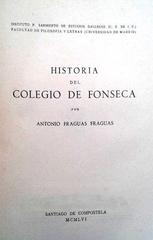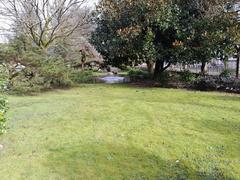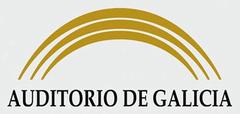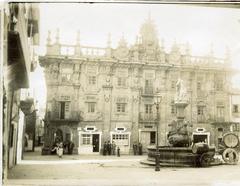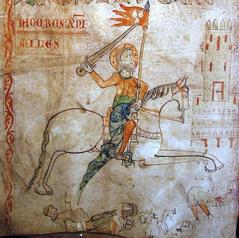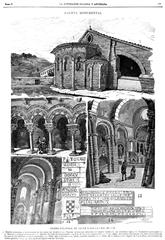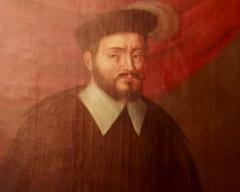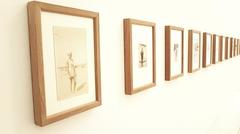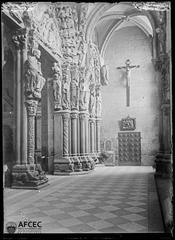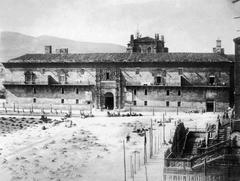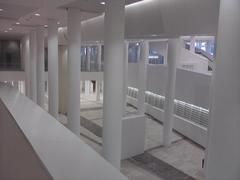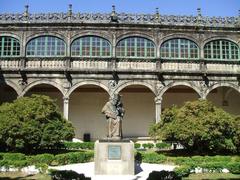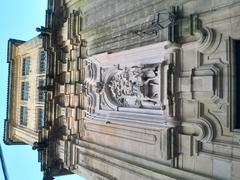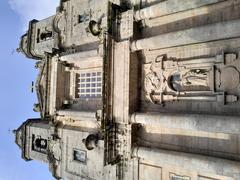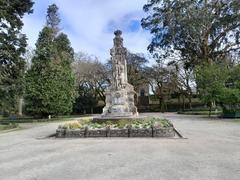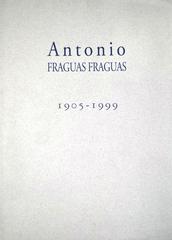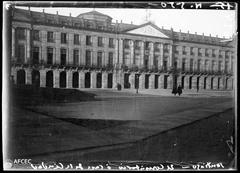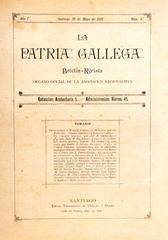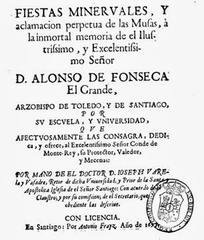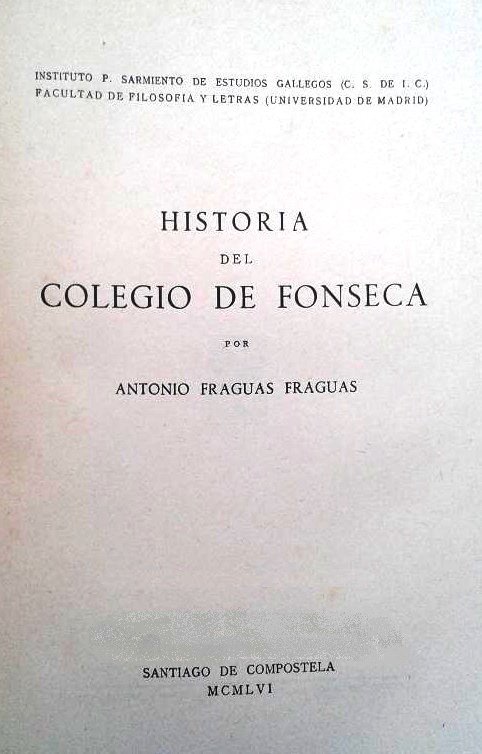
Santiago De Alfeo University College (Colexio de Fonseca): Visiting Hours, Tickets, and Guide to Santiago de Compostela Historical Sites
Date: 14/06/2025
Introduction
Nestled in the historic heart of Santiago de Compostela, the College of Santiago De Alfeo—widely known as Colexio de Fonseca—stands as a beacon of Renaissance architecture, academic heritage, and Galician culture. Founded in the early 16th century by Archbishop Alonso III de Fonseca, this institution unified higher learning in the region and played a pivotal role in shaping the University of Santiago de Compostela (USC), one of Europe’s oldest universities. With its stunning Plateresque façade, tranquil cloisters, and meticulously designed interiors, the college offers visitors an immersive journey through centuries of religious, academic, and cultural evolution.
This guide provides detailed information for travelers and history enthusiasts, including the college’s historical background, academic significance, architectural highlights, practical visiting hours, ticketing details, accessibility, and nearby attractions. Whether you are a pilgrim on the Camino de Santiago, an architecture aficionado, or a curious traveler, understanding the college’s multifaceted legacy will enrich your experience in this UNESCO World Heritage city.
For the latest visitor information, including guided tours, exhibitions, and events, consult official sources such as the University of Santiago de Compostela’s website and the Fundación Jacobea.
Table of Contents
- Historical Overview
- Academic Significance
- Cultural Importance
- Visiting Information
- Architectural and Artistic Highlights
- Nearby Attractions and Travel Tips
- Preservation and Cultural Impact
- Frequently Asked Questions (FAQ)
- Recommendations for a Memorable Visit
- Conclusion
- References and Further Reading
Historical Overview
Origins and Foundation
The origins of the College of Santiago De Alfeo (Colexio de Fonseca) trace back to the early 16th century. Established around 1526 by Archbishop Alonso III de Fonseca, the college aimed to centralize and elevate higher learning in Santiago de Compostela. Fonseca’s efforts led to papal authorization to consolidate various studia into a single institution, strategically located near the School of San Xerome with its main entrance on the bustling rúa do Franco (Fundación Jacobea).
Architectural Development
Construction began circa 1532 under the guidance of Juan de Álava, later completed by Alfonso de Covarrubias. The main Renaissance structure was finalized by 1544, with Diego de Romay adding the intricate Plateresque façade in 1688. This façade features the Fonseca family coat of arms, sculptures of the Doctors of the Church, and distinctive dragon motifs—possibly influenced by Mesoamerican art. The building’s interior includes a rib-vaulted vestibule, a Mudejar-coffered ceremonial hall (Salón de Grados), a Gothic chapel, and a Renaissance cloister designed by Gil de Hontañón (Wikipedia: Pazo de Fonseca).
Role in the University of Santiago de Compostela
The college served as the nucleus of the University of Santiago de Compostela (USC), founded formally as a university in 1495. It was the primary academic and administrative hub for centuries, fostering theological, legal, and later scientific studies. Today, the Pazo de Fonseca symbolizes USC’s enduring academic legacy (USC History and Heritage).
Academic Significance
Foundation and Early Academic Role
The USC originated as a School of Grammar in 1495 and received university status in 1501. Initially, its focus was religious instruction, with the College of Santiago De Alfeo serving as the principal venue for theological and philosophical education (USC History).
Expansion and Diversification
By the mid-16th century, the university broadened its academic scope, embracing the sciences, arts, and humanities. The Colexio de Fonseca led this transformation, evolving into a hub of intellectual and scientific progress in Galicia (USC History).
Modern Academic Excellence
Today, USC is recognized as one of Spain’s leading universities, offering a full spectrum of undergraduate and postgraduate programs. The Colexio de Fonseca remains a symbol of this tradition, housing the university’s General Library and hosting academic events and exhibitions (University of Aberdeen).
Cultural Importance
Pilgrimage and Religious Heritage
Santiago de Compostela is the terminus of the Camino de Santiago, a renowned Christian pilgrimage. The college’s proximity to the cathedral and its role as a meeting point for scholars, clergy, and pilgrims underscore its spiritual and cultural relevance (Spain.info).
Renaissance and Plateresque Artistry
The Colexio de Fonseca exemplifies Renaissance architectural ideals and Plateresque artistry. The cloister, with its harmonious proportions and lush gardens, reflects the humanist vision that shaped academic institutions during the era (Monnuage).
Role in Galician Identity
The college has been instrumental in preserving and promoting Galician language and culture, serving as a center for historical and linguistic scholarship (University of Aberdeen).
Visiting Information
Location and Access
Situated on Rúa do Franco, just steps from Praza do Obradoiro and the Cathedral, the Colexio de Fonseca is easily accessible by foot within Santiago’s pedestrian-friendly Old Town (thenwewalked.com). Public transport is generally unnecessary for reaching the site (lotuseaters.travel).
Visiting Hours
- General Opening: Tuesday to Sunday, 10:00 AM – 6:30 PM (last admission at 6:00 PM). Closed Mondays and select public holidays.
- Note: Visiting hours may change for special events or university schedules; always verify with the official university website or the tourist office.
Tickets and Admission
- Admission: Access to public areas (cloister, exhibitions) is typically free.
- Guided Tours: Available in Spanish, English, and Galician for a nominal fee. Advance booking recommended (thenwewalked.com).
- Special Exhibitions: Tickets (€3–€7) may apply for temporary exhibitions or events.
Accessibility
The ground floor and primary public areas are accessible to visitors with limited mobility, though some historic sections may have restrictions. For specific needs, contact the university or visitor services in advance.
Architectural and Artistic Highlights
- Plateresque Façade: Featuring the Fonseca coat of arms, ecclesiastical sculptures, and dragon motifs.
- Renaissance Cloister: A serene, arcaded courtyard with lush gardens and harmonious proportions (gl.wikipedia.org).
- Salón de Grados: Distinguished by its Mudejar-style coffered ceiling.
- Historic Library: One of Spain’s oldest university libraries, often hosting exhibitions of rare manuscripts.
- Gothic Chapel: Now repurposed for exhibitions and cultural events.
Nearby Attractions and Travel Tips
- Santiago Cathedral: Iconic pilgrimage destination, adjacent to the college (lotuseaters.travel).
- Praza do Obradoiro: The central square, ideal for people-watching and architectural photography.
- Mercado de Abastos: A vibrant market offering Galician delicacies (thenwewalked.com).
- Alameda Park: Offers panoramic city views and tranquil green spaces.
- San Martiño Pinario Monastery: Another major religious and academic landmark.
Travel Tips:
- Wear comfortable shoes for cobblestone streets.
- Mornings and late afternoons offer the best lighting for photography.
- Check the weather; Santiago is famous for its rain—carry an umbrella or raincoat.
Preservation and Cultural Impact
Declared a Bien de Interés Cultural in 1931, the Colexio de Fonseca is protected as a cultural monument and is included in Santiago de Compostela’s UNESCO World Heritage designation (UNESCO Santiago de Compostela). Preservation efforts continue to balance its academic functions with safeguarding its architectural legacy.
Frequently Asked Questions (FAQ)
Q: Are tickets required to visit the Colexio de Fonseca?
A: Admission to public areas is generally free; guided tours and special exhibitions may require tickets.
Q: What are the Colexio de Fonseca visiting hours?
A: Tuesday to Sunday, 10:00 AM – 6:30 PM. Closed Mondays. Always confirm before visiting.
Q: Is the Colexio de Fonseca accessible for visitors with limited mobility?
A: The main entrance and ground floor are accessible, though some areas may have steps. Contact ahead for specific needs.
Q: Can I take photographs inside?
A: Photography is allowed in the cloister and public spaces; restrictions apply in the library and during exhibitions.
Q: Are guided tours available in English?
A: Yes, but advance booking is recommended.
Recommendations for a Memorable Visit
- Explore the cloister and Renaissance details.
- Attend a public lecture or cultural event.
- Combine your visit with the Santiago Cathedral and Praza do Obradoiro.
- Participate in a guided tour for in-depth insights.
- Support local artisans and dine in nearby family-run restaurants.
Conclusion
The Colexio de Fonseca is a cornerstone of Santiago de Compostela’s historical and academic landscape. Its Renaissance architecture, serene cloisters, and ongoing role in university life make it an essential stop for any visitor interested in Galicia’s heritage. Benefit from free access, guided tours, and its proximity to other major landmarks to create a memorable and enriching travel experience.
For the latest visiting hours, ticket information, and event details, check the University of Santiago de Compostela’s official site, the Fundación Jacobea, and the UNESCO World Heritage page.
Download the Audiala app for exclusive content, guided tours, and real-time updates for Santiago de Compostela’s historical sites.
References and Further Reading
- Fundación Jacobea: College of Santiago Alfeo
- Wikipedia: Pazo de Fonseca
- University of Santiago de Compostela History and Heritage
- USC General Visitor Information
- USC Official Website
- ThenWeWalked: Santiago de Compostela Itinerary
- UNESCO World Heritage Site - Santiago de Compostela
